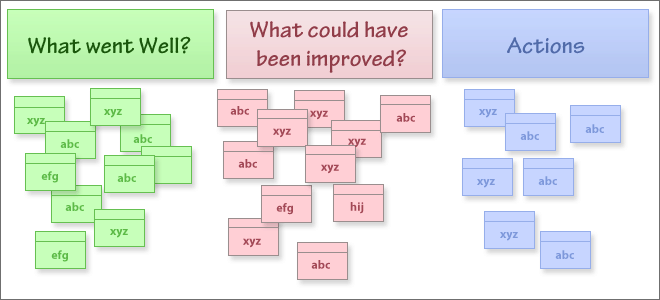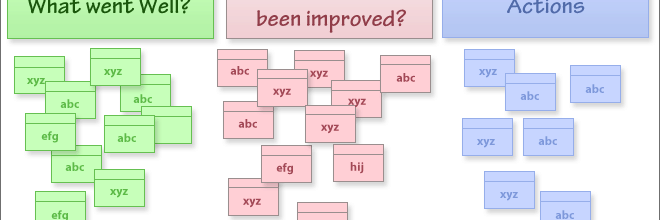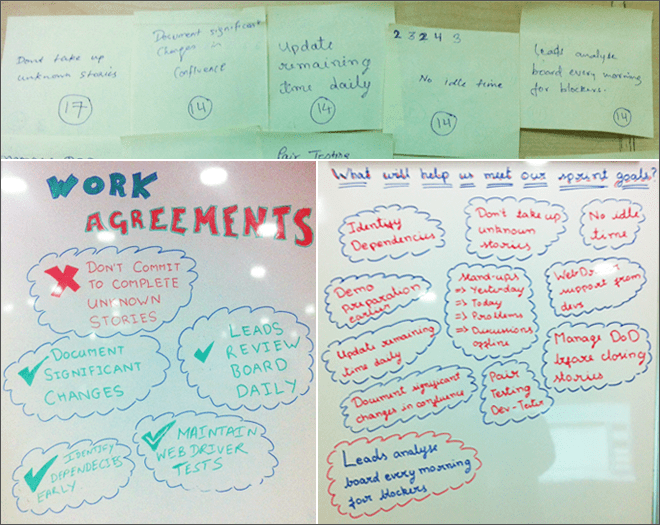Retrospecting The Retrospectives With Distributed Teams
By Vishal Prasad |
|
4 mins read |

So you have successfully completed a sprint with a majority of your deliverables accepted by your customers. What do you do next? It’s that point in time when you are ready to begin with your next adventure but only after that final campfire where you can look back at the sweet (and not so sweet) memories of the latest one.
At Arrk Group, Retrospectives form a great way to continuously improve ourselves, so we can perform better. Here’s an account of a team’s journey that made a difference using creative ways to retrospect and improve on various fronts.
Phase 1: The beginning of retrospectives in distributed teams
When the project began: Distributed development with agile teams in different time zones is difficult; to arrive at a consensus when it comes to team’s working agreements is even more difficult. Although past experience helps us take an educated guess about the things that will work in the future, it’s not guaranteed. Keeping this in mind, we began with a small set of team’s working agreements and promised to track and improve our processes as we go along. In order to improve our processes, we stuck a sheet on the wall that captured two primary aspects: “Processes that are working well” and “Processes that can improve”. Team members contributed during the sprint and on the day of our first retrospective we had a list of process improvement “Actions” that were prioritised and planned for implementation.
Of course, we had a bigger problem at hand; the problem of improving collaboration during our retrospectives. Since the teams were distributed across geographies, we used two sheets to capture our observations. This caused a disconnect since teams were not exposed to each other’s observations till the day of the retrospective ceremony. This needed to improve.
Phase 2: Improved collaboration in distributed teams
Confluence helped us address this problem in no time. Although we went in search for a tool or technique that would help us capture our comments seen in real time by all the team members spread across the globe we found a tool right in our backyard. Since the team was already using Confluence, it was easier to create a collaboration page to capture process related comments and publish it on every team member’s dashboard.
This gave rise to collaborative retrospectives across the distributed teams. During the retrospective, the teams could visually relate to and easily drag these comments under “What went well”, “What didn’t go well”, and the list of “Actions” – start or stop processes to help improve the team’s functioning.
This went on for a few sprints till the team was happy with their processes that started churning out great results. The question was, should we continue with retrospectives considering we are happy with what we have? We knew that there is room for improvement – but at this point in time, it’s not the processes that we need to improve on. A good framework is one that can be moulded to fit the wants of a design, and the same holds true for retrospectives. Although improvements were necessary, it wasn’t related to the processes, rather to identify the helpers, barriers, and risks for the team to accomplish their tasks effectively and efficiently.
This gave rise to a new retrospective that identified the impediments found by the team that was a hindrance to perform better. And the sailboat arrived.
Phase 3: Innovating retrospectives across distributed teams
In order to identify the blockers and helpers in performing day to day activities, the team began using the sailboat retrospective to capture the activities that helped smooth sailing of the project and the anchors that held them back.
We captured the essence of collaboration across distributed teams by digitising the sail boat dashboard, to capture collective observations from teams working oceans apart.
Sailboat helped us address issues from a varied perspective. We were able to capture the improvements and at the same time look-ahead at the risks and obstacles that may cross our path. It was a refreshing experience to try something new and address issues that were previously overlooked. And we did not stop there.
Phase 4: And the innovation continues…
Over sprints we worked towards improving our working agreements and processes, removing impediments, capturing and rewarding good work, and much more using other forms of retrospectives. Creative retrospectives have become a part of Arrk’s culture and are here to stay. We believe in doing Retrospectives not for the sake of process but to make a difference to the things we do and for collective growth. As and when monotony strikes or we think we are not being challenged, we innovate. Thus our retrospectives are collaborative and thought provoking that leads to continuous improvement, continuous creativity, and continuous innovation. It’s one of the many small things that we do to help our customers achieve their goals and succeed. At Arrk, We Deliver!









